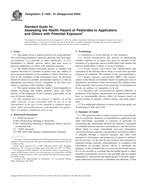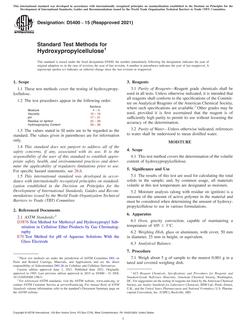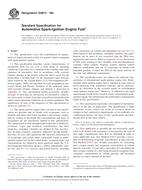1.1 This guide provides a review of the test methods for determining hydraulic conductivity in unsaturated soils and sediments. Test methods for determining both field-saturated and unsaturated hydraulic conductivity are described.
1.2 Measurement of hydraulic conductivity in the field is used for estimating the rate of water movement through clay liners to determine if they are a barrier to water flux, for characterizing water movement below waste disposal sites to predict contaminant movement, and to measure infiltration and drainage in soils and sediment for a variety of applications. Test methods are needed for measuring hydraulic conductivity ranging from 1 X 10-2 to 1 X 10-8 cm/s, for both surface and subsurface layers, and for both field-saturated and unsaturated flow.
1.3 For these field test methods a distinction must be made between “saturated” ( s) and “field-saturated” ( fs) hydraulic conductivity. True saturated conditions seldom occur in the vadose zone except where impermeable layers result in the presence of perched water tables. During infiltration events or in the event of a leak from a lined pond, a “field-saturated” condition develops. True saturation does not occur due to entrapped air (1). The entrapped air prevents water from moving in air-filled pores that, in turn, may reduce the hydraulic conductivity measured in the field by as much as a factor of two compared to conditions when trapped air is not present (2). Field test methods should simulate the “field-saturated” condition.
1.4 Field test methods commonly used to determine field-saturated hydraulic conductivity include various double-ring infiltrometer test methods, air-entry permeameter test methods, and borehole permeameter tests. Many empirical test methods are used for calculating hydraulic conductivity from data obtained with each test method. A general description of each test method, and special characteristics affecting applicability is provided.
1.5 Field test methods used to determine unsaturated hydraulic conductivity in the field include direct measurement techniques and various estimation methods. Direct measurement techniques for determining unsaturated hydraulic conductivity include the instantaneous profile (IP) test method, and the gypsum crust method. Estimation techniques have been developed using borehole permeameter data, and using data obtained from desorption curves (a curve relating water content to matric potential).
1.6 The values stated in SI units are to be regarded as standard.
1.7 This standard does not purport to address the safety problems associated with its use. It is the responsibility of the user of this standard to establish appropriate safety and health practices and determine the applicability of regulatory limitations prior to use.
Product Details
- Published:
- 08/10/1998
- Number of Pages:
- 11
- File Size:
- 1 file , 140 KB


